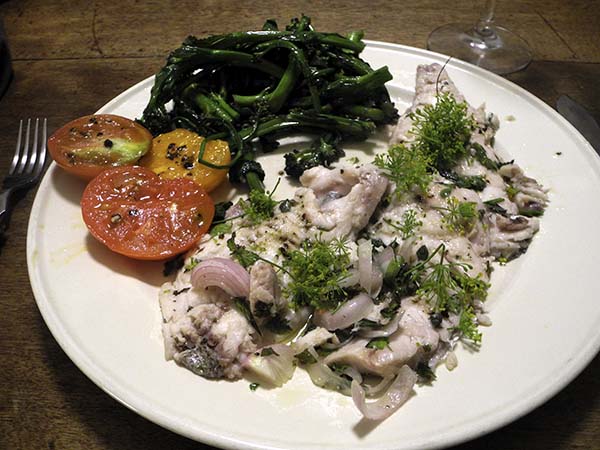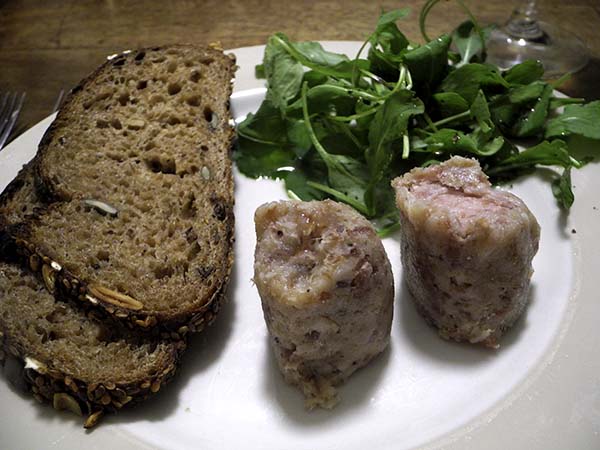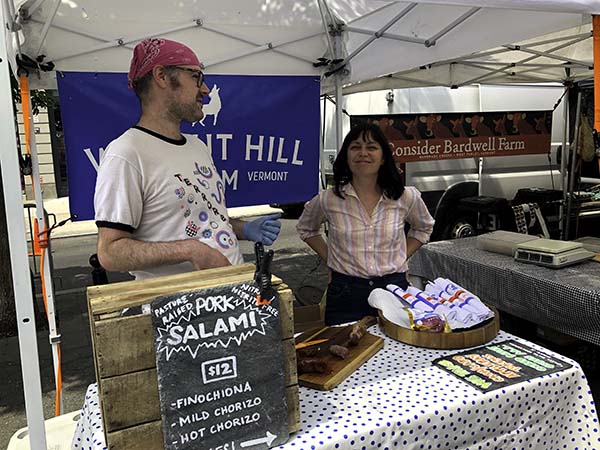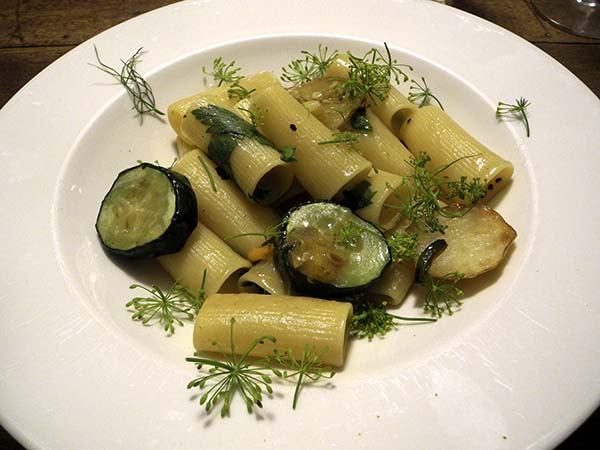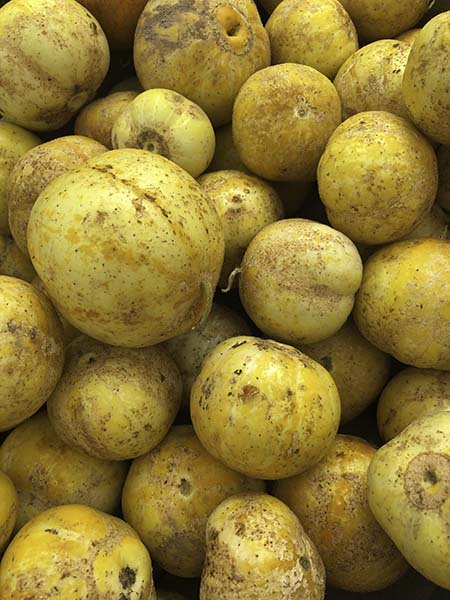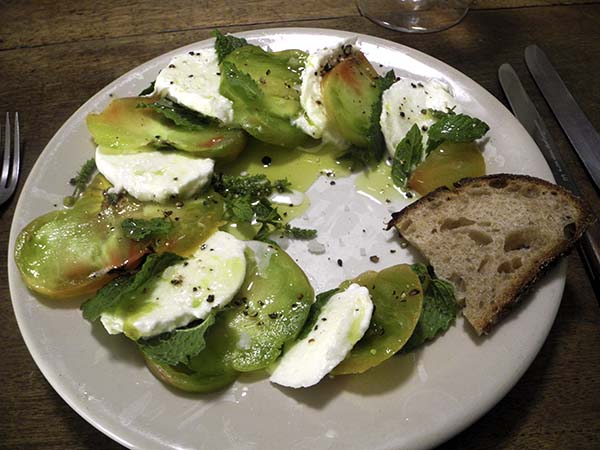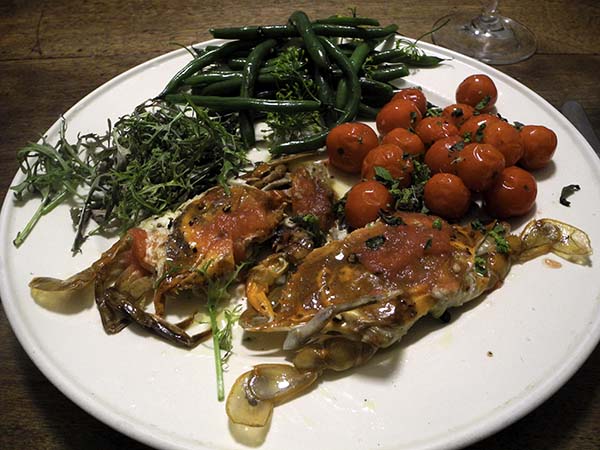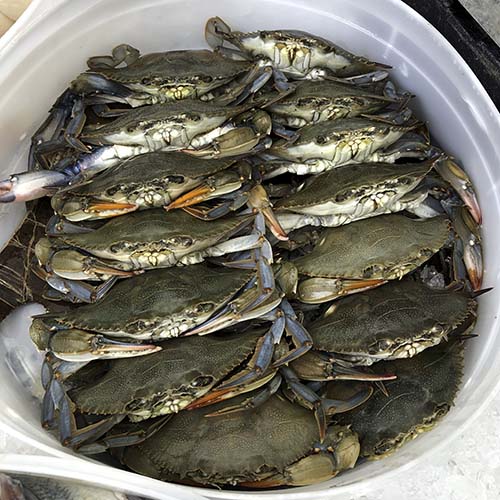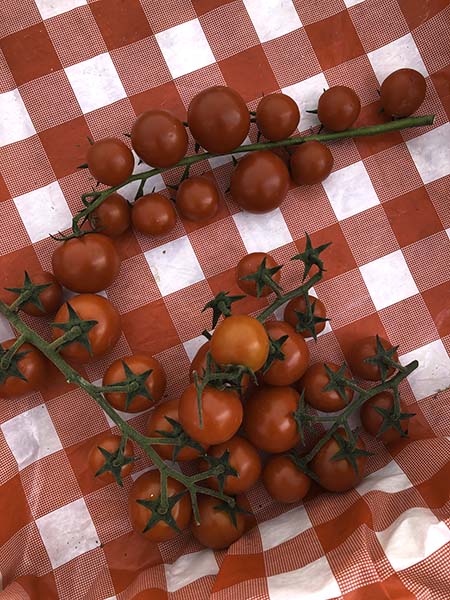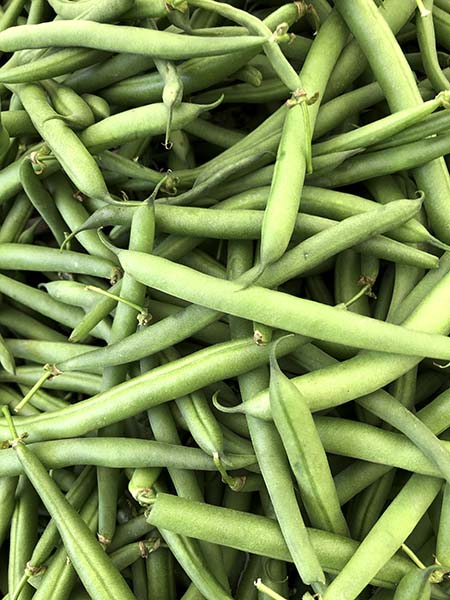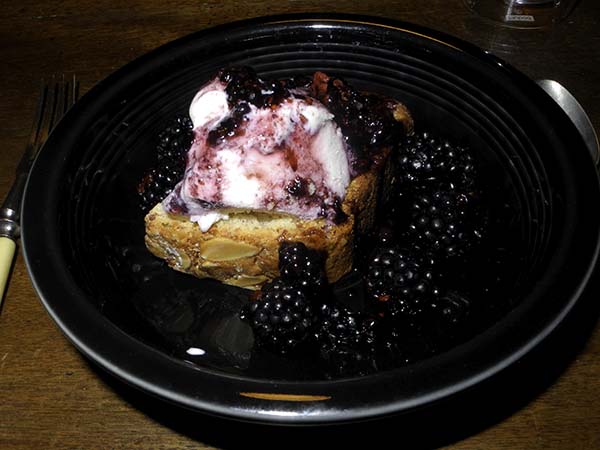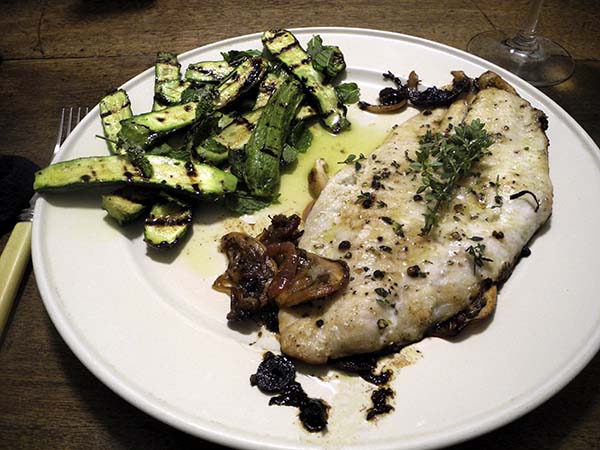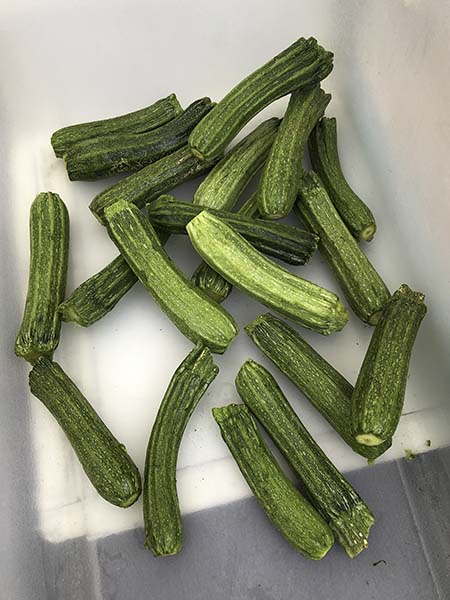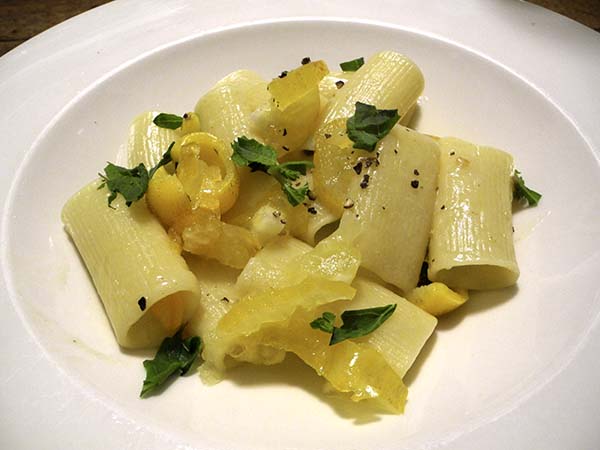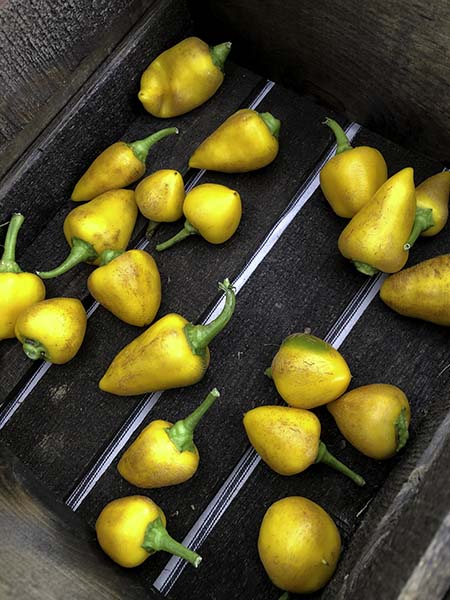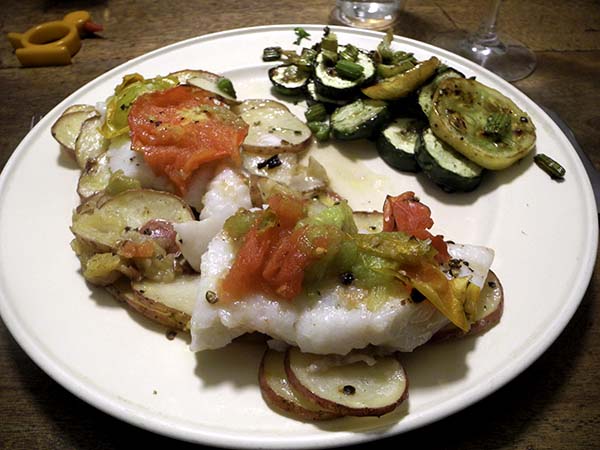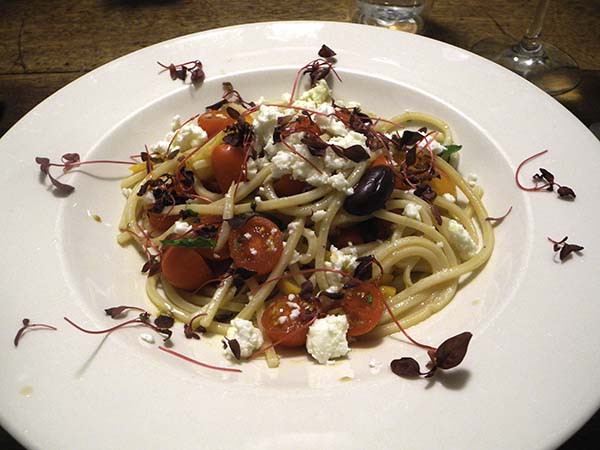
..and marjoram.
[note; the picture doesn’t include any of the green herb mentioned in the description below; until we’d begun to eat, I hadn’t remembered to add it, but I then quickly and – mostly – corrected the error]
It could have been a wintry meal, mostly because of the cabbage part, that it didn’t have any problem showing off in August. It also felt a little Alpine, and the excellent Germanic wine Barry chose to accompany it with turned out to be an inspired choice.
We awaited the meal with some breadsticks and a Portuguese (Douro/Duriense) white wine, glasses from a bottle of Quevedo Family Alvarinho 2018, from Naked Wines
- two tablespoons of olive oil; 2 large chopped cloves of still-juicy-in-August, ‘Nootka Rose’ garlic from Jayne, of TransGenerational Farm in the Union Square Greenmarket, 3 salted Sicilian anchovies, thoroughly rinsed and filleted, from Buon Italia in Chelsea Market; 2 very small quite hot Calabrian ‘diavoletti rossi‘ peppers, also from Buon Italia, and 2 medium bay leaves, dry, but fresh when purchased, from Westside Market, heated together inside an antique copper pot above a medium flame until the garlic had colored, then 8 ounces of shredded green ‘personal size” cabbage from Campo Rosso Farm added and cooked, with the heat raised to high, with the addition of a quarter cup of the same Douro white we were enjoying while I cooked, stirring occasionally, until the cabbage was tender (only a few minutes), a pinch or so of smoked dried chipotle peppers from from Eckerton Hill Farm added, the sauce then tossed with 8 ounces of a Hudson Valley pasta, Sfoglini’s whole grain reginetti (organic stone milled hard red flour from the Hudson Valley, organic durum semolina, water) that had just been cooked al dente, and stirred over a high flame with a cup of reserved pasta water until the liquid had emulsified, some freshly ground black pepper then added, a teaspoon of chopped marjoram from Quarton Farm mixed in, and the mix arranged inside 2 shallow bowls, with more marjoram sprinkled on top
- the wine was a German (Franken/Main) white, Weingut May Silvaner Trocken Gutswein 2016, from Copake Wine Works
- the music was Georg Philipp Telemann’s 1726 opera, ‘Orpheus’, René Jacobs conducting the Academy for Ancient Music Berlin and the Berlin RIAS Chamber Chorus; the album liner notes describe the work as “..a successful synthesis of national operatic forms from Italy, France and Germany.” (another good pairing with the entrée)
